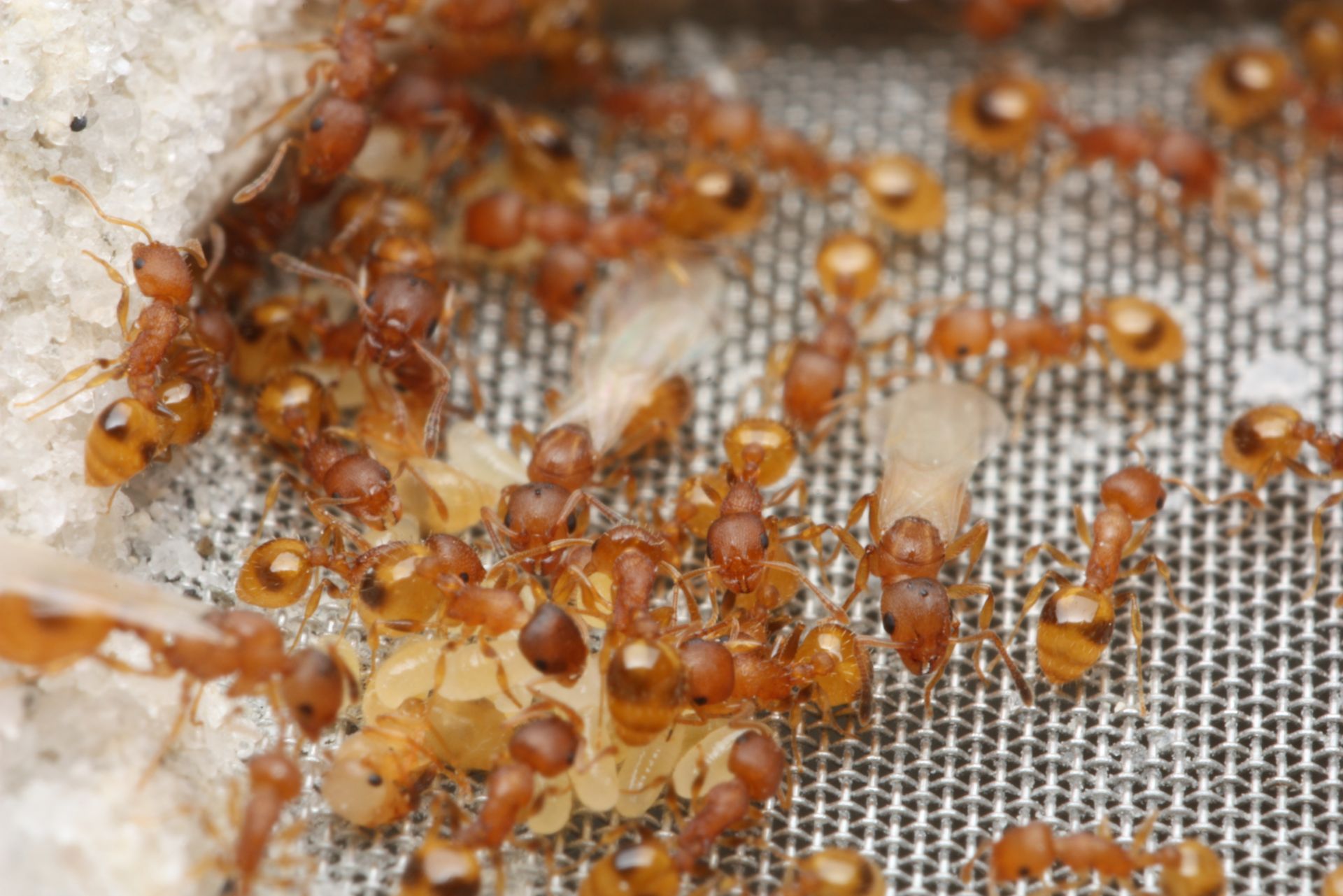
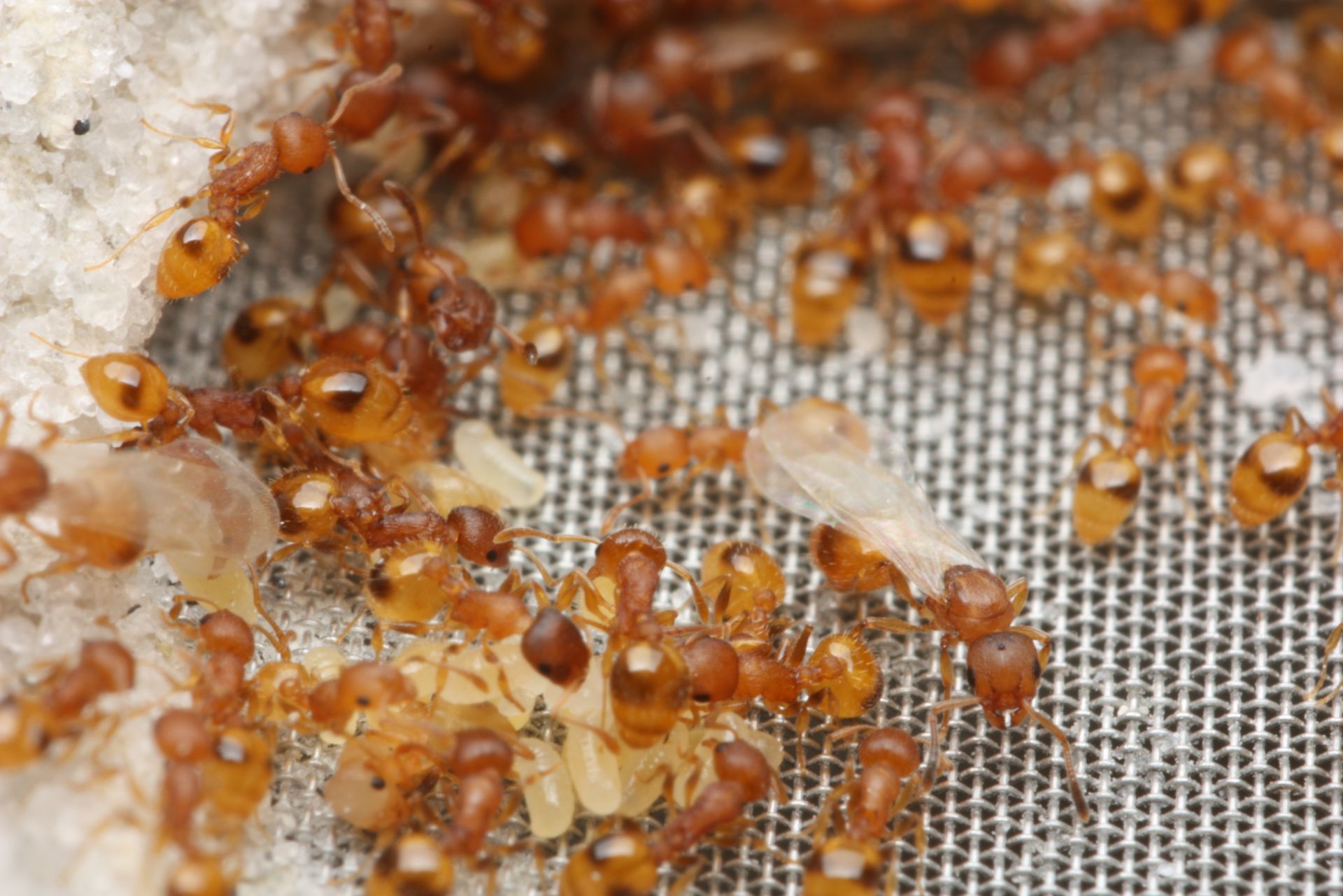
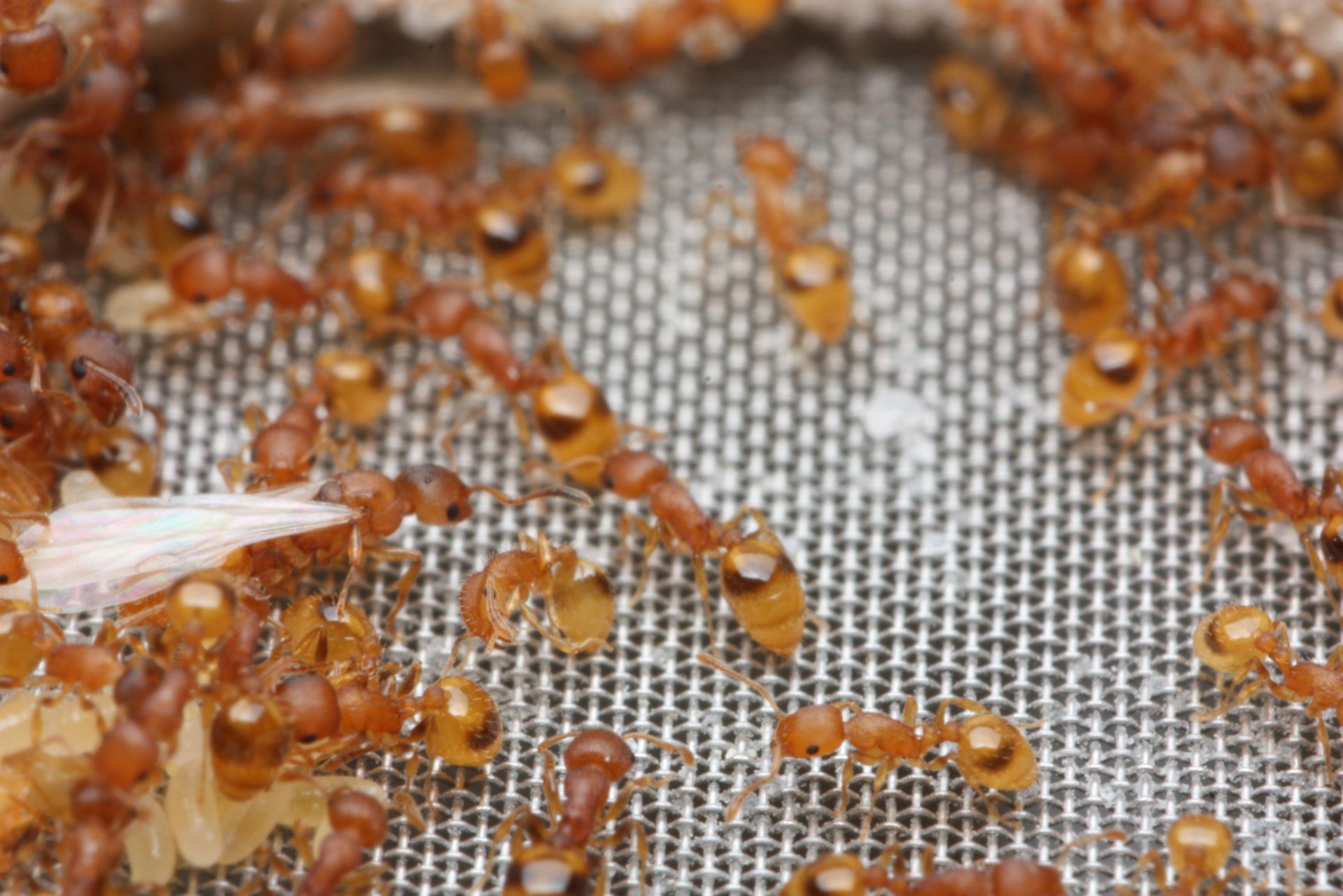
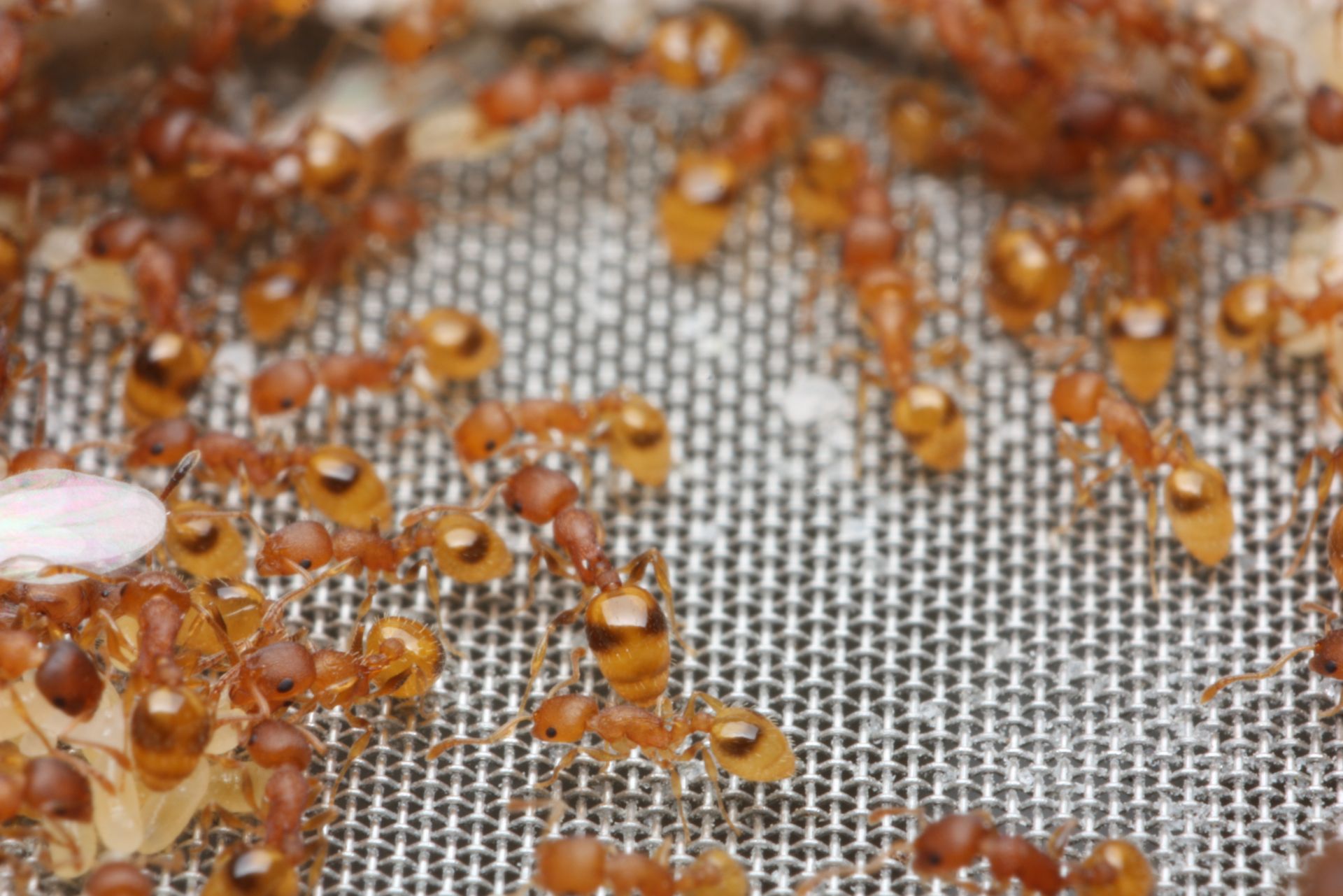
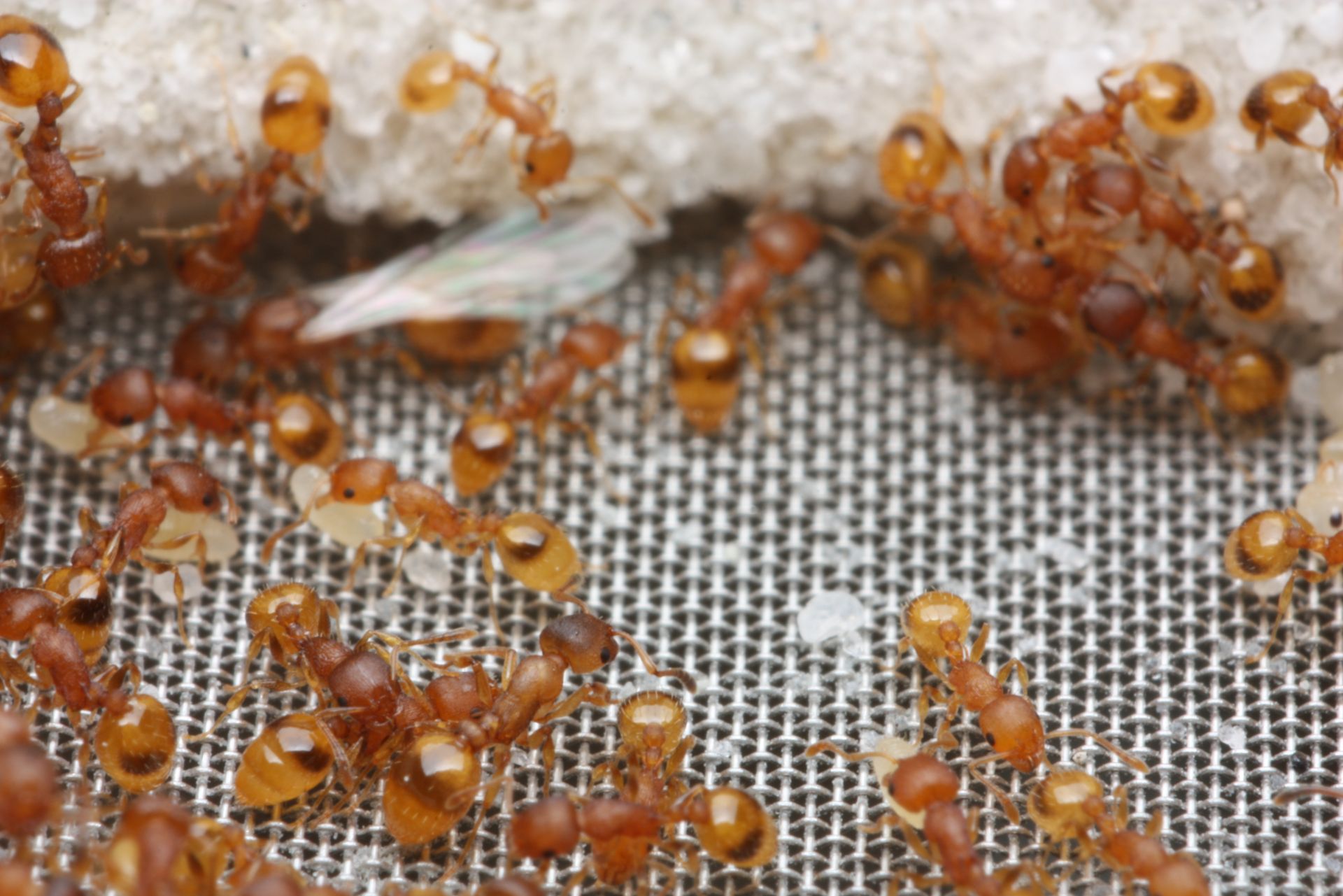
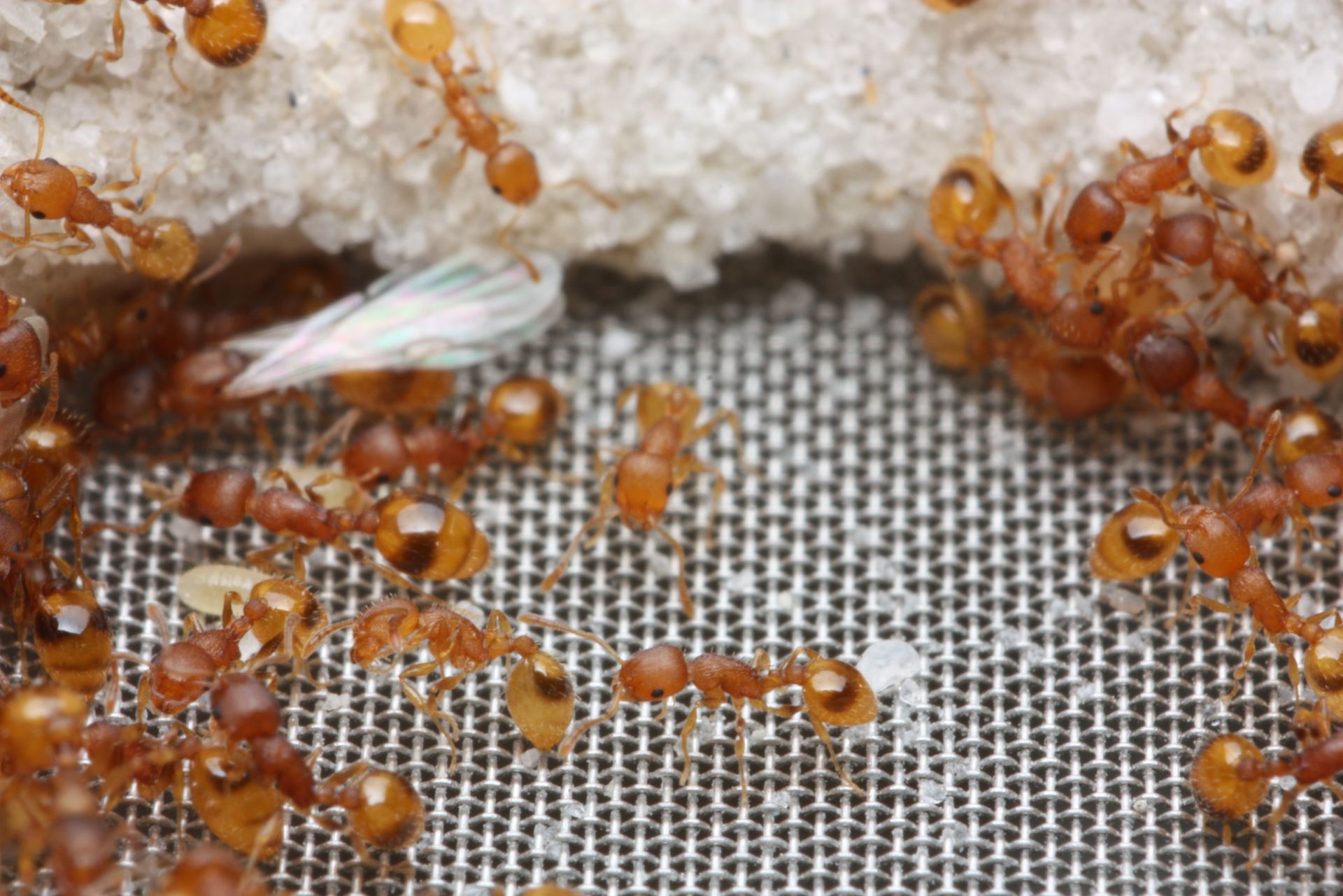
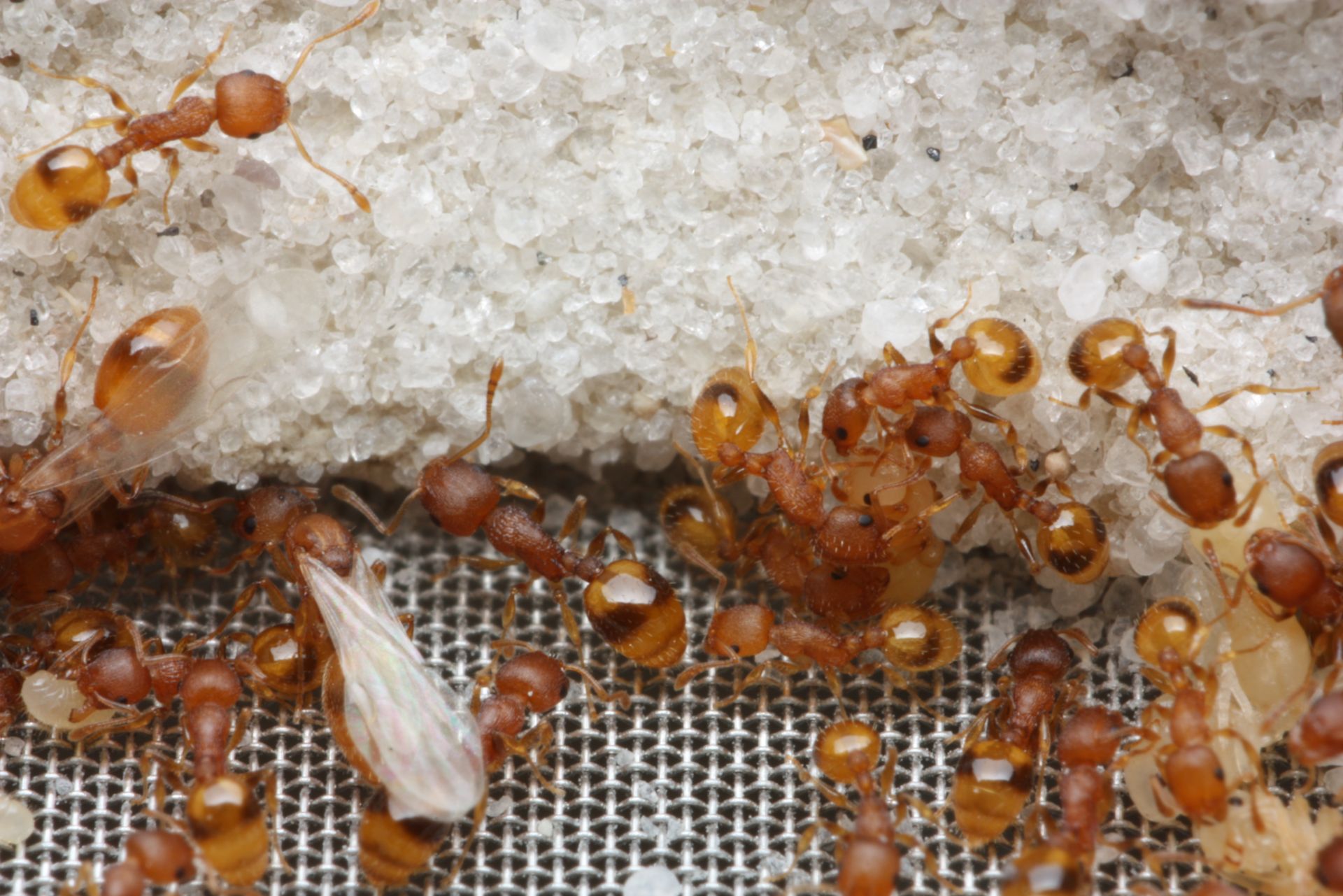
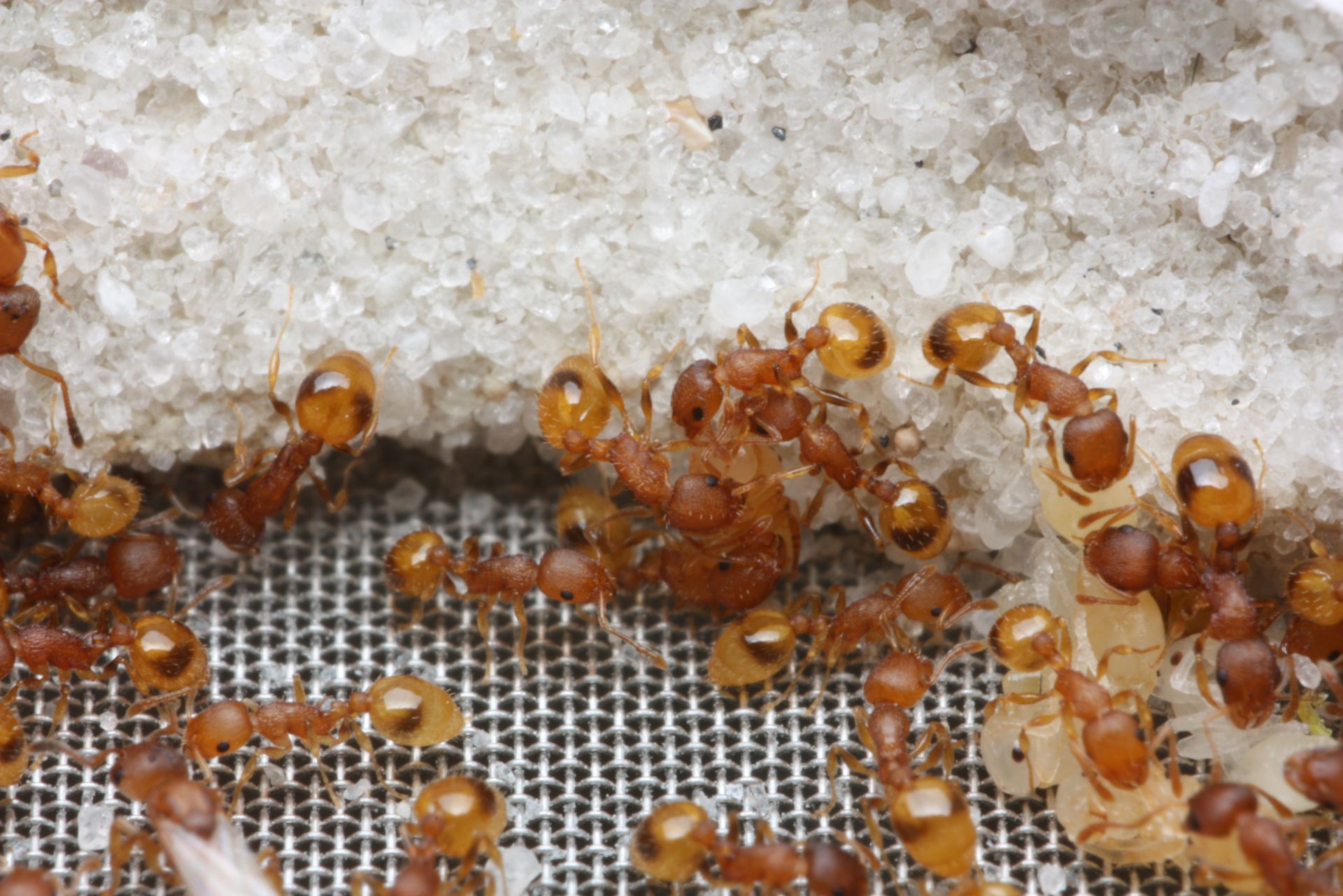
And here’s some photos with my phone that capture the queen:



Edited by CatsnAnts, August 21 2020 - 6:46 PM.
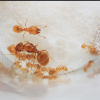

Best Answer Manitobant , August 22 2020 - 12:49 PM
The alates definitely look like my duloticus queens, and parasite queens get more bulky once they have established a colony.
Go to the full post 











Edited by CatsnAnts, August 21 2020 - 6:46 PM.
There is a very small chance it could be a dulotic species if the workers look different, though my temnothorax ambiguus have some slight color variation.
could possibly be. Slave making temnothorax are very poorly studied in north america.There is a very small chance it could be a dulotic species if the workers look different, though my temnothorax ambiguus have some slight color variation.
I would think the same thing, except T. ambiguus lack the black spots on the sides of their abdomen, these resemble T. curvispinosus workers more than T. ambiguus.
If this is of any interest, I noticed that this colony had two distinct color patterns within the worker population: some had dark heads and some had light heads. The workers with light heads were often getting into fights and tugging matches with the workers with dark heads, might this actually be a dulotic species?
Edited by CatsnAnts, August 21 2020 - 5:39 PM.
just dump brood into their outworld or try attaching a setup with another colony to your dulotic species. If you witness the dark headed workers actually steal the pupae you can be confident that its a slave maker.If this is a dulotic species, how would I go about raising it? I have easy access to T. ambiguus and curvispinosus brood.
Edit: this would also explain why this colony has never had very much brood present at any given time.
Edited by CatsnAnts, August 21 2020 - 6:37 PM.
Edited by CatsnAnts, August 21 2020 - 6:49 PM.
Consider Temnothorax pilagens or Temnothorax duloticus. User AnthonyP163 will know more about them, as he has kept them
Yes, some of the workers appear to match with T. duloticus.
How long have you had this colony? Is it possible that the alates could have been from eggs laid by a previous queen? The alates/queen look very bright compared to the duloticus queen I had.
Ant Keeping & Ethology Discord - 2000+ Members and growing
Statesideants.com - order live ants legally in the US
Edited by CatsnAnts, August 22 2020 - 10:07 AM.




Edited by CatsnAnts, August 22 2020 - 10:23 AM.
Edited by CatsnAnts, August 22 2020 - 10:44 AM.
I think that clears it all up then! The species is T. duloticus, as well as the other alates. Good to know, and thank you! I’ll be starting a journal on them soon.The alates definitely look like my duloticus queens, and parasite queens get more bulky once they have established a colony.
Edited by CatsnAnts, August 22 2020 - 1:40 PM.
0 members, 0 guests, 0 anonymous users